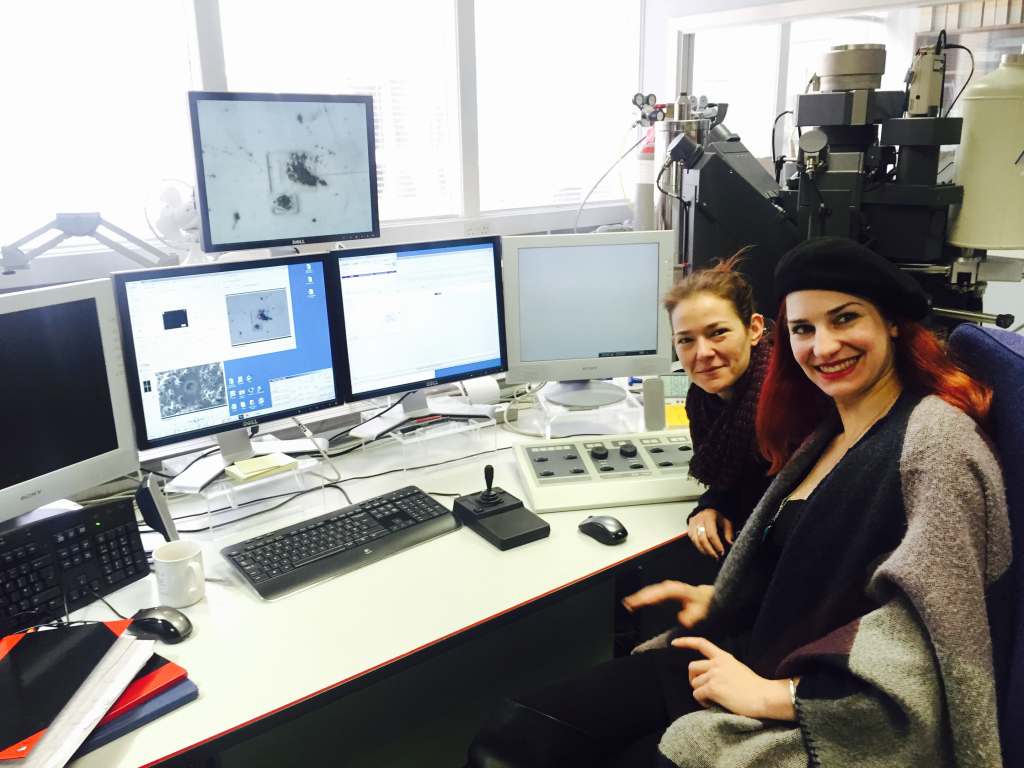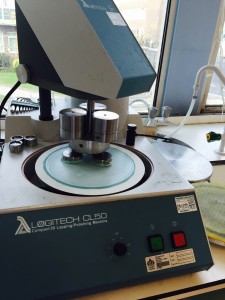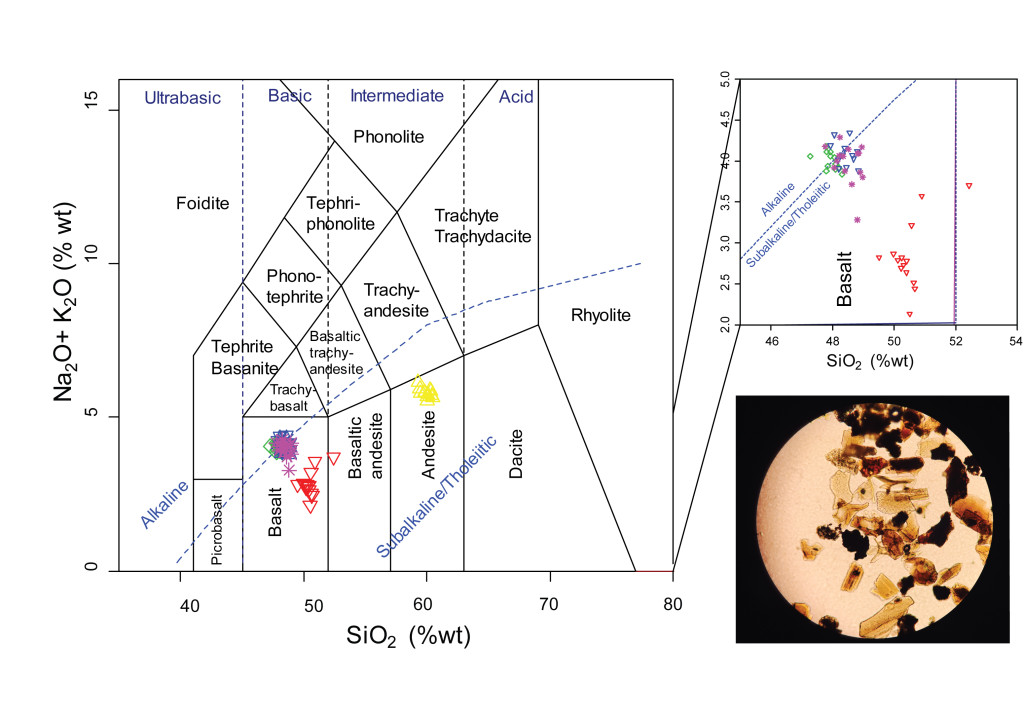
Five visible tephra layers were identified by naked eye during the processing of the Renland ice core – both in the field and during core cutting at AWI. At the Centre for Ice and Climate, Eliza Cook was able to take sub-samples from each deposit for geochemical analysis and the results form an initial tephrostratigraphy framework for Renland. This framework will be substantially added to when cryptotephra deposits are searched for and identified over the next few months (cryptotephra deposits contain tephra grains in low concentrations and are not visible to naked eye).

The visible samples were mounted on microscope slides and set in epoxy resin. Once each was confirmed as tephra (and not dust) through optical properties under cross polarised and normal transmitted light, the slides were carefully polished in preparation for geochemical analysis, using 1, 6 and 9 µm diamond suspension polish, to expose a flat, cross section through tephra grains on the microscope slide (pictured). Deriving the major element content from individual tephra shards is facilitated using electron probe micro-analysis (EPMA). Expressed as oxide percentages, up to 13 major elements can be assayed using this approach, including Si, Al, Ti, Fe, Mn, Mg, Ca, Na, K and P, which comprise the non-volatile elements. The EPMA technique uses x-rays to determine the presence and concentration of major elements within individual tephra grains and the technique works on the basis that when a glass shard is ‘bombarded’ with a focussed electron beam, the x-rays generated have a distinct energy and wavelength characteristic of a particular element. Thus, by measuring the intensity of the x-ray signal, an inference can be made as to the abundance of that particular element as the signal generated is directly proportional to the abundance of the element within the shard.
Taking the first samples for EPMA analysis at the Tephra Analysis Unit (University of Edinburgh) in late February provided a good opportunity for Ice2Ice colleague Sarah Berben (from University of Bergen, pictured) to become familiar with Cameca SX100 microprobe, before analysing her own marine tephra samples over the next few months. Over the next couple of years Eliza and Sarah will work together to try to find common tephra deposits in the ice and marine records.

In addition to the Renland samples, other Holocene tephra deposits from Dye3 and NGRIP ice cores were also processed during the week, and the results will contribute to improving the Holocene tephrostratigraphy in Greenland and will also contribute to Ice2Ice.
In summary, analysis reveals all tephra deposits to be of Icelandic origin and can be separated into three rock types; Andesite, Tholeiitic Basalt and Transitional Alkali Basalt. This is shown on the total alkali vs silica (TAS) classification diagram, used to discriminate between rock types, based on Na2O+K2O vs SiO2 content. This plot assigns a rock type to samples and is also used to discriminate between alkaline and sub-alkaline products.
ANDESITE A single andesite deposit, has a homogeneous andesite composition, characteristic of products from Hekla, from the Eastern Volcanic Zone of Iceland. Icelandic andesite less than other volcanic products and will form a useful marker deposit.
THOLEIITIC BASALT DEPOSITS There were two tholeiitic basalt deposits. The first has a heterogeneous tholeiitic basalt composition, with two populations, indicating different volcanic sources. The first population has a geochemical similarity to products from Bárdarbunga-Veidivötn and Grímsvötn centres, while the second has a similarity to products from Grímsvötn and Kverkfjöll
